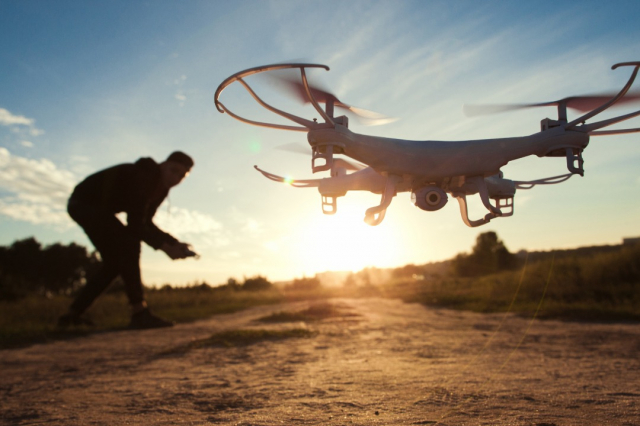Can I fly a drone on the Camino de Santiago? Here are the regulations in Spain
Even though we are more familiar with this type of remote control devices, it is completely normal not to be up to date with all the current regulations.
Anyone who has ventured on the Camino de Santiago can confirm it: all the pilgrimage routes have panoramic views that are impossible to forget. Regardless of the starting point, the roads leading to the city of Compostela are full of magic, legends, monuments, rivers, oceans, trails, vast fields and a wide variety of scenes that leave more than one pilgrim speechless.
Photography is a medium that allows us to immortalize many of the great experiences that the Camino de Santiago leaves behind. However, and thanks to technological advances and new audiovisual trends, there are other possibilities that go beyond professional cameras or the application of our cell phone. Drones have become the latest and most popular tools to capture the true essence of some wonderful landscapes.
But is it possible to fly a drone while walking the Camino de Santiago? Despite the fact that we are becoming more and more familiar with this type of remote-controlled aircraft, it is completely normal not to be up to date with all the regulations in force. The answer will depend mainly on the weight of the drone itself, as well as the areas where it is flown.
In which cases you can fly a drone on the Camino de Santiago
The agency in charge of regulating the use of drones is none other than the National Aviation Safety Agency (AESA). According to the new drone regulations in Spain, in 2021 the official drone pilot license will continue to apply exclusively to the Security Forces and Corps. For the rest of the cases, civilians and amateurs, for drones over 250 grams you will need a certificate that accredits a minimum knowledge to be able to use them freely.
This means that to fly drones of this category it will be necessary and mandatory to pass an AESA Level 1 or Level 2 exam (in case of a more specific category, it would be necessary to pass the AESA Level 3 exam). However, recreational drones of less than 250 grams do not require an official license to use them, so this exception makes it possible to fly a drone freely while walking the Camino de Santiago. That is, as long as it complies with the new C0 construction regulations; a CE marker that must be clearly visible when the device is purchased.
What are the regulations and limitations when using a drone under 250g?
Although the regulations are much more permissive for drones weighing 250 grams, there are several general limitations to their flight. These range from the maximum altitude to taking special care with the areas where it is used, such as restricted use, military use or environmental protection.
- The drone must always be within visual range of the pilot.
- Do not exceed 120 meters in height or 50 meters in horizontal distance.
- Do not fly within a minimum of 8 kilometers from any airfield, airport or controlled airspace.
- Do not fly in National Parks, environmental protection zones, reserves or other protected natural areas.
- Special care with the Data Protection Law, since the right to privacy of individuals who may appear in the captured images must be protected.
Routes
Blog
 ¿Vas a hacer el camino de Santiago? Cuida tus pies antes y después
¿Vas a hacer el camino de Santiago? Cuida tus pies antes y después
 5 razones por las que contratar un seguro de viajes
5 razones por las que contratar un seguro de viajes
 Formas de hacer un logotipo
Formas de hacer un logotipo
 La importancia del registro de llamadas durante tu viaje por el Camino de Santiago
La importancia del registro de llamadas durante tu viaje por el Camino de Santiago
Information
Points of interest
Cities & Towns | Hostels | Lodgings | Restaurants | Saddlery | Doctors | Points of interest | Bikes workshop
Contact us | Privacy policy | Cookies policy | | Terms of use | Authorship | Web Map | Consentimiento
© Copyright LA VOZ DE GALICIA S.A. Polígono de Sabón, Arteixo, A CORUÑA (ESPAÑA) Inscrita en el Registro Mercantil de A Coruña en el Tomo 2438 del Archivo, Sección General, a los folios 91 y siguientes, hoja C-2141. CIF: A-15000649
